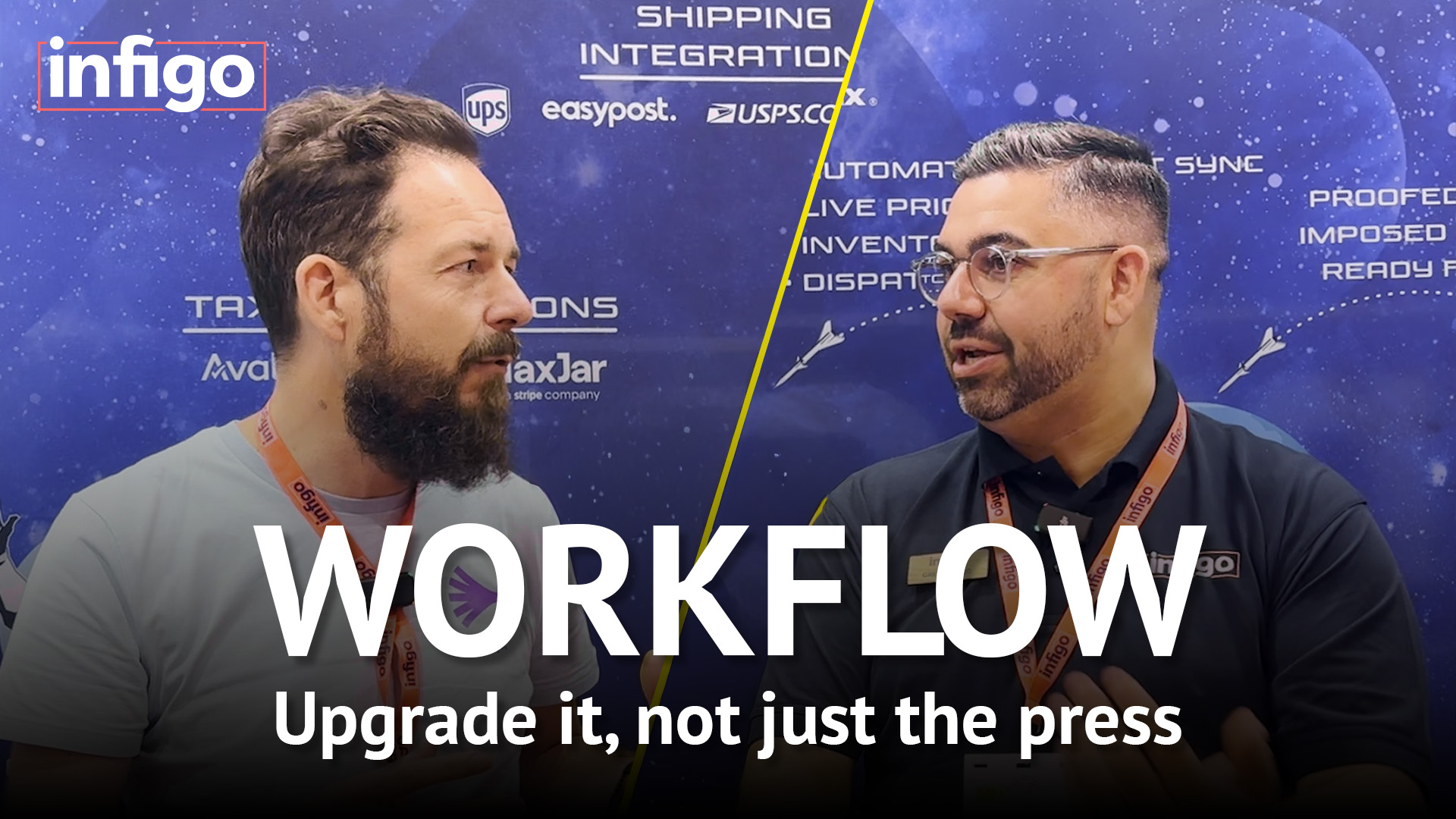It’s never been more challenging to be a print provider. Seismic societal shifts, economic volatility, rising inflation, and customers increasingly embracing digital-first buying behaviors have transformed the landscape—while also increasing demand for more complex print products.
As order volumes grow, customer expectations rise, and product offerings diversify, print businesses need more than just a basic ordering system—they need a web-to-print solution that scales with them.
Scalability and automation are no longer “nice-to-haves.” They’re essential criteria for any print provider looking to stay competitive and drive long-term growth. In this blog, we’ll explore the must-have features your web-to-print platform needs to support your success—today, tomorrow, and into the future.
What Is Integration—And Why Does It Matter?
As your print business grows, so do the demands on your systems. What may have worked at launch—like a basic storefront with limited customization—can quickly become a bottleneck as you onboard new clients, expand product offerings, and manage higher order volumes.
Scalability means having a platform that grows with your business—without requiring a full rebuild every time you land a larger client or enter a new market.
A scalable web-to-print solution empowers you to:
- Handle increasing order volumes without sacrificing speed or accuracy
- Support multiple clients, brands, or locations within a single unified system
- Add new product categories or services without complex workarounds
- Adapt to new customer types, markets, or regions with minimal disruption
Without scalability, growth becomes difficult to sustain—and you risk losing customers to competitors offering a faster, more flexible experience.
Consider this: research suggests that frictionless user experiences can boost customer conversion rates by up to 400%, while other studies indicate that as many as 88% of customers may abandon a business after a poor digital interaction.
Automation: The Key to Efficiency
Manual processes don’t scale. The more orders you receive, the harder it becomes to keep up if your team is still inputting data, chasing approvals, or manually handling files. Automation is the engine that drives efficient growth—eliminating repetitive tasks and reducing the risk of human error.
With automation, you can:
- Streamline order intake and reduce turnaround times
- Automate proofing and approvals, cutting down on delays
- Optimize production by routing jobs to the right equipment automatically
- Trigger stock reorders when inventory drops below pre-defined levels
The result? A faster, more reliable operation that consistently delivers high-quality service—even as order volumes increase.
Essential Scalable Features
When evaluating web-to-print solutions for a growing business, scalability needs to be built into the core functionality. Here are key features that ensure your platform is ready to support long-term expansion:
Modular Platform Architecture
A modular system allows you to start with the features you need today and add new modules as your business evolves. Whether it’s new product types, advanced personalization options, or integration with additional systems, modularity ensures you’re never locked into a rigid framework.
Multi-Storefront Support
For businesses serving multiple brands, corporate clients, or franchise networks, multi-storefront functionality is essential. It enables you to create separate storefronts with unique branding, pricing, and product selections — all managed from a single backend system.
Global Accessibility
As your business expands into new markets, your platform should support multiple languages, currencies, and regional tax rules. Global accessibility ensures a seamless experience for all customers, regardless of location.
Critical Automation Features
Automation should touch every stage of the web-to-print process. These features help create a truly efficient, scalable operation:
Dynamic Templates
Offer customers the ability to personalize designs within preset parameters, maintaining brand consistency while reducing design workload. Dynamic templates empower users to self-serve, eliminating the need for constant designer intervention.
Order Approval Workflows
Built-in approval processes allow corporate clients or franchisees to submit orders for review before production begins. This reduces the risk of errors, ensures brand compliance, and speeds up approvals.
Automated Inventory Management
Real-time inventory tracking prevents stockouts and overstocking. Automated reorder triggers can ensure that materials and consumables are replenished in time to meet demand, minimizing production delays.
Integration with Production Equipment
Advanced platforms can communicate directly with digital presses, cutters, and finishing equipment, streamlining job scheduling and reducing setup times. This creates a more seamless production environment where orders move quickly from online submission to finished product.
Integration & Compatibility
No system operates in a vacuum. As your business grows, your web-to-print platform must integrate smoothly with your broader tech stack – from CRM systems and ERP software to MIS tools, printing hardware and cutting machines.
API access and pre-built integrations allow data to flow freely between systems, reducing duplication and errors. This not only improves operational efficiency but also enhances the customer experience by providing real-time order statuses, accurate pricing, and personalized marketing.
Reporting & Business Intelligence
Growth isn’t just about doing more, it’s about doing better. Advanced reporting tools provide insights into customer behavior, product performance, sales trends, and production efficiency. With this data at your fingertips, you can make informed decisions on pricing, marketing, staffing, and capacity planning.
Business intelligence features turn your web-to-print platform into a strategic growth tool, not just a transactional system.
As the saying goes, knowledge is power, and according to a study by the Centre for Economics and Business Research, 80% of businesses that utilize real-time data experience an uplift in revenue.
Support, Updates & Vendor Partnership
Finally, consider the vendor’s commitment to supporting your growth. Look for:
- Responsive customer support and training resources
- A proven track record of regular updates and feature enhancements
- A clear product roadmap aligned with evolving industry needs
Choosing a vendor who understands the unique demands of growing print businesses can make a significant difference in the long-term success of your web-to-print investment.
Foundations for Growth
For growing print businesses, the right web-to-print solution is more than just an online ordering tool, it’s a foundation for scalable, automated, and efficient growth. By prioritizing scalability, automation, integration, and support, you’ll ensure your business can meet today’s demands while staying ready for tomorrow’s opportunities.
Discover More
To learn how Infigo could transform your workflows, download our guide “Workflow Bottlenecks: The Hidden Cost in Print Operations and How to Fix Them” now.




